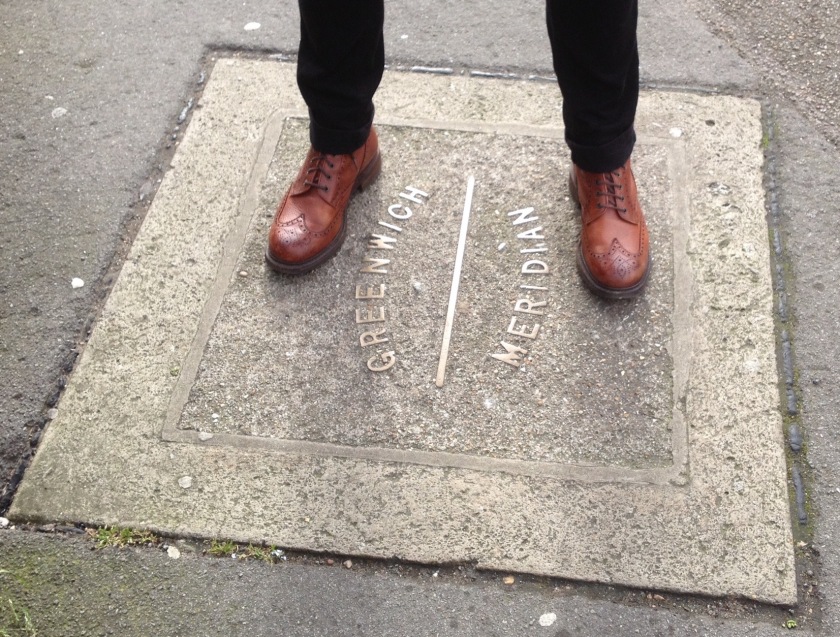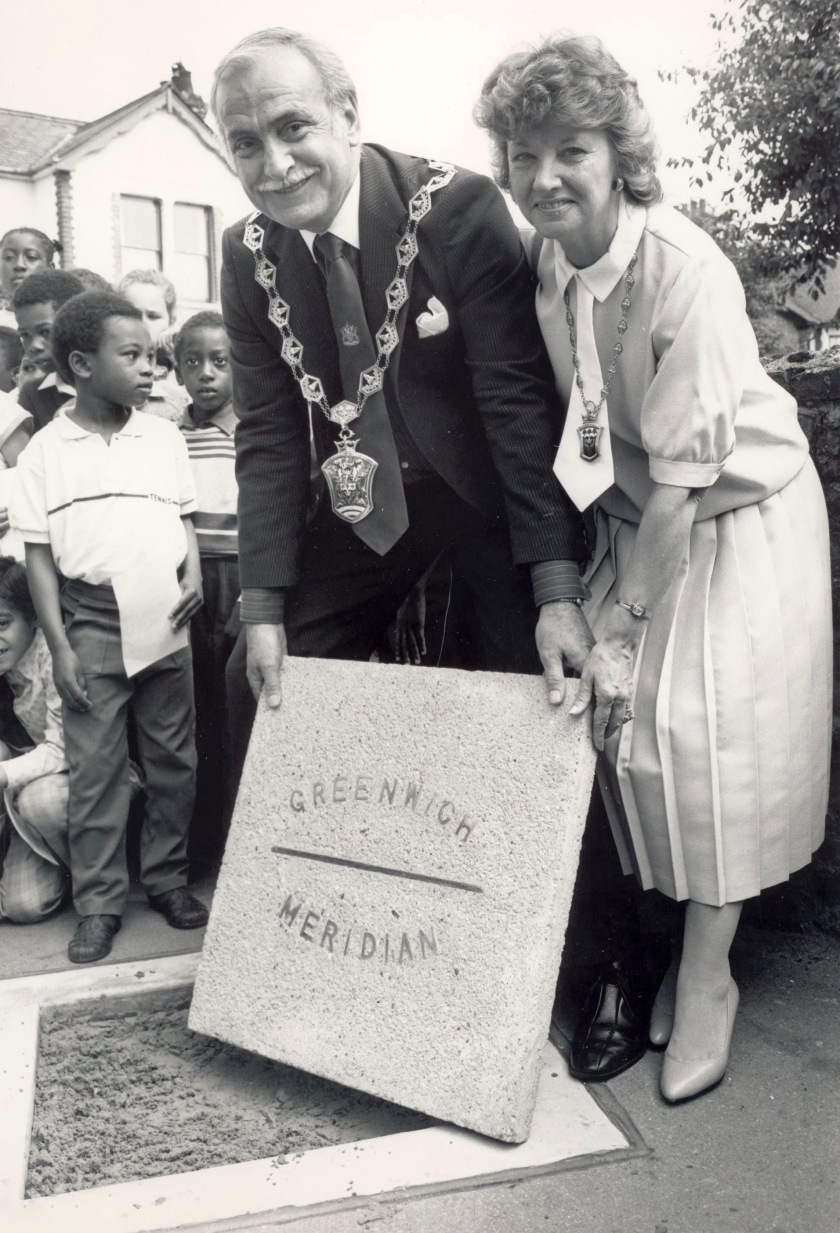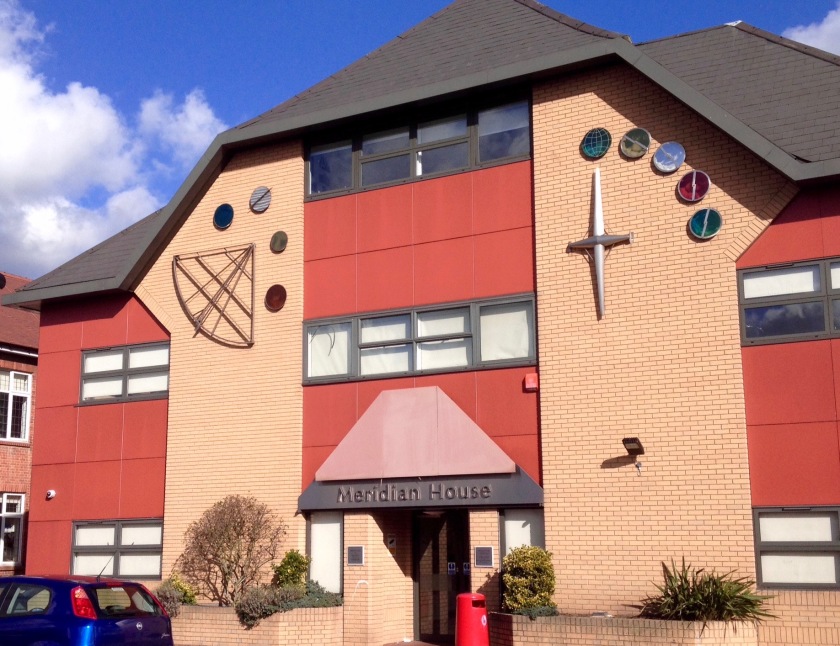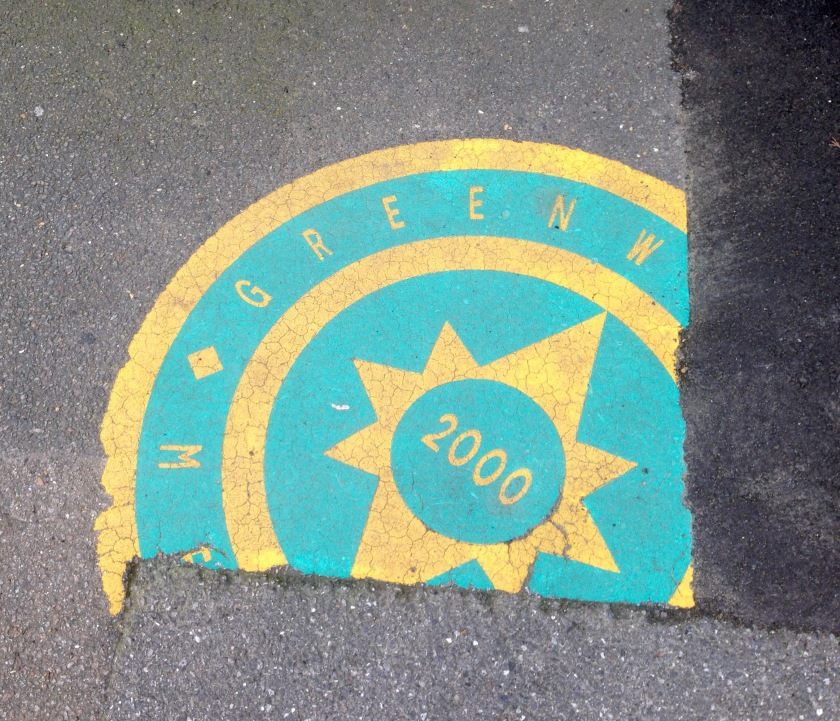
Crossing the Line
When I moved into the east London house in which I live, I was intrigued to discover in a nearby street a concrete paving slab with a neat brass inlay marking the line of the Greenwich Meridian. Twenty years later, I still take pleasure making sure I have a foot in each hemisphere as I cross the Prime Meridian. Though the elegantly shod feet in the picture above are not mine but belong to my friend JSF!
The Greenwich Meridian is the imaginary line of longitude that divides the globe into east and west, as the Equator divides it south from north. The Meridian passes from Pole to Pole through England, France, Spain, Algeria, Mali, Burkina Faso, Togo, Ghana and Antarctica. Each year, many thousand visitors from all over the world visit the Royal Observatory at Greenwich, and most take the opportunity of a photograph astride the Line. By contrast, very few people seem to take much notice of the many, varied and freely accessible Meridian markers elsewhere.
My local borough of Waltham Forest has perhaps been more diligent than many in marking the presence of the line.

- Mayor Cllr Derek Arnold with Essex Road Meridian plaque
The discreet brass plaque in Leyton that captured my imagination dates back to 26th June 1984, and is one of several installed by the borough of Waltham Forest to mark Meridian Day. This commemorated one hundred years since the International Meridian Conference, held in Washington DC in 1884, which agreed to adopt the meridian line that passed through the Principal Transit Instrument at Greenwich as the Prime Meridian.
Nationally, commemorative stamps were issued by the Royal Mail, the Duke of Edinburgh planted a tree and the Red Arrows flew up the Line. More locally, the Mayor of Waltham Forest installed the plaque here in Leyton.
Sixteen years later style and taste had changed. The Millennium year of 2000 saw a rash of green and yellow compass roses pop up on every street in Waltham Forest crossed by the Meridian. Apparently designed to last only for the year, there was no planned programme to remove them, and those that have survived the wear and tear of the last sixteen years now look rather sorry for themselves.

- Leyton Sixth Form College – Meridian House
Very close to the two plaques above, the Line passes through the aptly named Meridian House, part of Leyton Sixth Form College, and decorated with fine representations of two Greenwich observatory instruments on the front wall. The one on the left is Hooke’s ten foot Mural Quadrant of 1676, on the right, Troughton’s 10-foot Transit Instrument, which defined the Greenwich Meridian from 1816–50.

Prime Meridian Marker Wood Street E17
Pleasingly, the borough seems to have decided to return to a more durable and elegant style of marker than the green and yellow compass roses. Last year new permanent markers started to appear comprising a cast metal pavement plaque alongside a line of white stone studs.

- Meridian Markers, Pole Hill
Not all the markers in Waltham Forest are purely decorative. Pole Hill in Chingford, eleven miles north of the Observatory at Greenwich, was a convenient point for a reference marker to check that the main telescope really was pointing due north. And in 1824, John Pond, the Royal Astronomer at the time, built the taller of these two stone pillars to provide an alignment check for the Greenwich telescope.

- Inscription on Meridian Pillar, Pole Hill
Extraordinarily, the smaller pillar on Pole Hill (an Ordnance Survey Trig. Point) is still used by the Observatory, but not to align the telescope. Instead it is the point from which Observatory staff check the green beam of the Millennium Laser that has blazed out across London’s night sky from the Old Observatory Building at Greenwich since midnight 31st December 1999. So, if on a clear night, you see a wobble in the laser beam, it might not be anything wrong with your eyes. It may just be that someone from the Observatory is checking with a colleague at Pole Hill that the beam is still correctly aligned and accurately illuminating the Prime Meridian for many miles.

- Ordnance Survey Trig Point, Pole Hill


I enjoyed this – thank you! The white dots seem a strange idea – very diagrammatic – do you know where that idea came from?
LikeLike
I’m afraid not Jaywalker. Glad you liked the post.
LikeLike